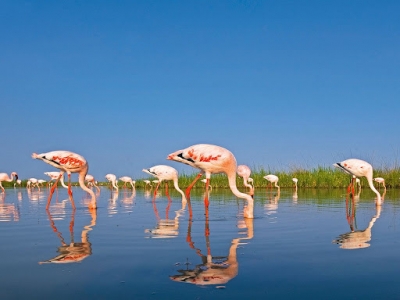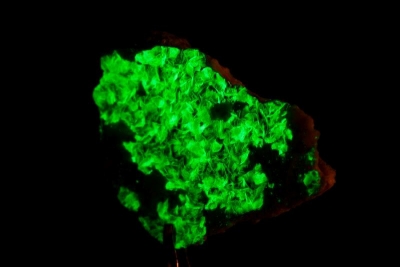
Assam is one of the Eight Sister States of North A eastern India. Known for its rich culture and diverse population, the culture of Assam is a fusion of Indo-Burmese, Mongolian and Aryan influence. It is bounded to the north by the kingdom of Bhutan and Arunachal Pradesh, to the east by Nagaland and Manipur, to the south by Mizoram and Tripura, and to the west by Bangladesh and the States of Meghalaya and West Bengal
The name Assam is derived from the word asama meaning “peerless” in the now extinct Ahom language. The neighbouring states of Arunachal Pradesh, Nagaland, Mizoram, and Meghalaya were once part of Assam. The capital, formerly Shillong (now the capital of Meghalaya), was shifted to Dispur, a suburb of Guwahati, in 1972. The beautiful land, known as the land of red rivers and blue hills’ is a little paradise with untouched natural landscapes worth traversing for its pristine beauty
Major tribes of Assam
Ahom or Tai-Ahom: They are the admixed descendants of the Tai people who reached the Brahmaputra Valley of Assam in 1228.
Karbis: They are one of the major ethnic communities in Assam and especially in the hill areas of Assam.
Bodo-Kacharis (also Kacharis or Bodos) are an anthropological and a linguistic group living predominantly in Assam, Tripura and Meghalaya.
Mising is an indigenous community inhabiting parts of Assam and Arunachal Pradesh.
Nyishi community is the largest ethnic group and they live in the Sonitpur and North Lakhimpur districts of Assam.
Rabha live mostly in Goalpara, Kamrup, Kokrajhar, Udalguri, and Baksa districts; and also in some places Bongaigaon, Chirang, Sonitpur, and Karbi Anglong districts.
Rajbongshi or Koch-Rajbongshi is an ethnic group inhabiting parts of Assam, Meghalaya, and northern West Bengal.
Tea-garden community composed of multi-ethnic groups of tea garden workers and their dependants in Assam. They are officially referred as “Tea tribes” by the Government of Assam. They are the descendants of indigenous people brought by the British colonial planters as labourers from the regions of present-day Jharkhand, Odisha, Chhattisgarh, West Bengal and Andhra Pradesh into colonial Assam during 1860-90s in multiple phases for the purpose of being employed in the tea garden industry as labourers.
Customs and traditions
Customs and traditions play a significant role in society and the Assamese strictly adhere to the customs laid down by their forefathers, pertaining to their communities. These customs are beliefs that originated in the past and have been followed ever since, generation after generation Weddings, births, deaths and festivals in Assam include many customs that are supposed to be followed by all.
The people of Assam always believed in the joint family system and it is still prevalent among both tribal and non-tribal communities. Some of the tribes follow the matriarchal system, which asserts that the mother is the centre of the clan and that her property will be given to her daughters. If there are no daughters, it will be passed to the youngest daughter of her sister. The prevalent custom among the Dimasa-Kacharis is that the sons inherit the father’s property while the daughters inherit the mother’s property. The Assamese use bamboo to welcome guests because of their attachment to the bamboo culture.
Traditional dress
The Assamese adorn very simple dresses, mostly hand loomed. Women wear the motif-rich Mekhela Chador or Riha-Mekhela, while men wear the ‘suria’ or ‘dhoti’, and over it drape a chadar known as ‘Seleng’. Gamosa is an indispensable part of almost all socio-religious ceremonies in Assam. It is derived from the Kamrupi word ‘Gaamasa’ (gaama + chadar) which was used to cover the Bhagavad Purana at the altar. It is a white rectangular piece of cloth with a red border on three sides and woven motifs on the fourth. Bihu dancers wrap it around the head, and it is still used to cover the altar at the prayer hall or the scriptures.
Jaapi: This is basically known as the sunshade of Assam. It is made of bamboo strips and dried palm leaves locally known as Tokow Pat. There are many types of Jaapi like the Halua Jaapi, Pitha Jaapi, Sorudoiya Jaapi, Bordoiya Jaapi, etc. Jaapis were also used as headwear in the olden days, mostly by the rich Folk music instrument and noble families. Farmers use Jaapi as umbrellas while working in the paddy fields.
Folk music
Assam is rich in folk music. From the time of the Kamarupa Kingdom followed by Ahom Dynasty, Assamese culture has been influenced by their rulers, except for the British rule which ended the Ahom Dynasty. The indigenous folk music has influenced the folk music of artistes like Bhupen Hazarika, Parvati Prasad Baruva, Jayanta Hazarika, Utpalendu Choudhury, Nirmalendu Choudhury and others. Classical Assamese music is divided into Borgeet and Ojapali which combines narrative singing with dancing. The music of Oja-pali has a raga system of clear traditional orientation.
Arts and craft
Traditional crafts like pottery and terracotta work, brass craft, jewellery-making, musical instruments making, cane and bamboo craft, silk and cotton weaving and woodcraft are a major source of employment for the people of Assam.
Weaving is the most ancient among these, and even now women take pride in working in the handloom industry. Gandhiji lauded the Assamese weavers as artistes who could weave dreams in their looms. Various ethno cultural groups make exclusive types of cotton garments with embroidery designs and colour combinations
Painting is another ancient form of art known since the time of Chinese traveller Xuanzang (7 century CE). Most of the manuscripts from the middle ages have excellent examples of traditional paintings. They were influenced by the concept and designs in the medieval works such as the Chitra Bhagavata. There is a Department of Fine Arts in Assam, which is a central government organization that focuses on the art and craft of north east India with particular reference to Assam.
Festivals
Assam is full of festivals, the most important being the Bihu. It is celebrated to mark the important points of a cultivator’s life over a yearly cycle. It is a non-religious festival celebrated by all irrespective of caste and creed. Rongali or Bohag Bihu celebrated in mid-April with the coming of spring and the beginning of the sowing season. It is also known as Rangaali Bihu (‘rang means ‘merry-making’).
Another important festival is the Kangaali Bihu (‘kangaali’ meaning ‘poor’) is celebrated in mid-October. It is called so because by this time the harvest is brought home. The Magh Bihu is celebrated in mid-January. There are community feasts and bonfires which take place during the festival days. Also known as the Bhogaali Bihu (‘bhog’ means ‘enjoyment and feasting’). The first day of rongali bihu is called Goru Bihu when the cows are taken to the nearby ponds to be bathed. Ali-Ai-Ligang is the spring festival, and the name of the festival is made up of three terms — ‘Ali’, root and seed, ‘Ai’ means fruit and ‘Ligang, to sow.
Traditional dances
Ojapali, Devdasi, and Sattriya are the major dance styles of Assam. Oja, the lead dancer, narrates a mythological story along with the fusion of dance and acting. It is of three types – biyah-gowa that presents Mahabharata stories with the rhythmic use of feet, sukananni which celebrates the worship of snake goddess Manasa, and ramayani based on the Assamese version of Ramayana. Sattriya was developed by Sankardeva.
Devadasi-deva-nati or nati nas is a conventional temple dance that is performed by unmarried women who submitted their lives to the presiding deity. The dances of the Bodos are associated with the Kherai Puja festival where Bagurumba dance is the most popular. Other folk dances are incomplete without the Jhumur performed by the Adivasis which is a synchronized dance of boys and girls to the sound of drums and flute.
Cuisine
Assamese dishes are said to be less spicy than any other Indian dishes. Assamese are mostly non-vegetarian, and their staple diet is rice. Fish, chicken, duck and pork are also eaten and are popular. Fish curry is prepared as a sour dish called Machor tenga. Baked fish wrapped in leaves with white mustard paste is a popular delicacy. Dried fish is a traditional tribal cuisine. The variance of rice are produced and prepared like Cheera (flattened rice), akhoi (parched paddy grain), muri (puffed rice), pithguri (pound rice), sandoh guri (fried, pound rice), komal saul and bora saul. The presence of traditional “detoxifying’ appetizers like Khar is prepared by burning the stem of the banana tree.
People who have a weakness for sweets won’t be disheartened one bit as the Assamese dish is incomplete without sweets and one of its specialties called pitha is made from rice. Til pitha (moulded sticky rice cake with black sesame filling), ghila pitha (fried rice cakes), sunga pitha (rice cake baked inside whole bamboo pieces), narikolor laaru (sweet coconut balls) and kol pitha (banana pancakes) are some of the other delicacies of the Assamese cuisine.
Traditional jewellery
Assamese jewellery is usually handmade, and the designs depict flora and fauna. The people are fond of wearing beautiful and unique style of ornaments made of gold and silver and varieties of jewels. The traditional ones worn by men are called Biri, Magardana, Matamoni, Kundal and Lokaparo while those worn by the women are Keru, Karphul, Kharu, Aargathi, Nalak, Keyur and Nupur.
Major occupations
Agriculture is the main occupation of the people in Assam. It accounts for 63 per cent of the state’s workforce. Most farmers are engaged in the cultivation of rice, which is the staple diet of the people. Other crops include pulses, jute, tea and fruit cultivation. Assam is well-known all over the world for its tea plantations and the tea gardens of Assam provide employment to nearly a million people. Assam’s tea plantation forms 15 per cent of the world’s tea output.
Picture Credit : Google










